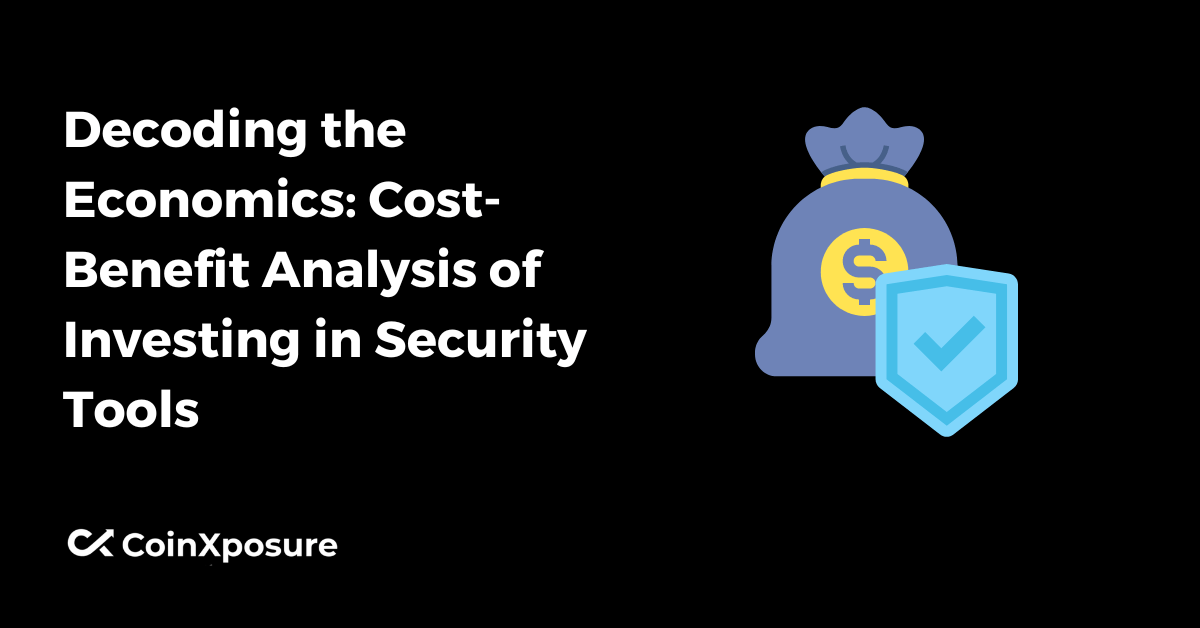
Decoding the Economics – Cost-Benefit Analysis of Investing in Security Tools
In an era where digital landscapes face escalating threats, the strategic deployment of security tools is a critical safeguard for organizations. “Decoding the Economics – Cost-Benefit Analysis of Investing in Security Tools” delves into the intricate balance between the financial outlay and the invaluable protections offered by security investments.
This exploration navigates through the nuanced considerations, providing insights into the multifaceted aspects of cost and benefit analysis within the dynamic realm of cybersecurity.
The Cost Side
The cost side of investing in security tools encompasses both initial and ongoing expenditures. Initial costs involve acquiring and implementing security tools, while ongoing operational expenses include maintenance, updates, and the continuous development of skills necessary to optimize these tools.
Understanding the financial commitments on the cost side is crucial for organizations seeking to fortify their defenses against evolving cyber threats.
The Benefit Side
On the benefit side, investing in security tools yields substantial advantages. Among these are mitigating risks, reducing the likelihood of security breaches, and minimizing potential financial losses.
Additionally, security investments contribute to regulatory compliance, ensuring adherence to legal requirements and averting potential fines and legal consequences. Quantifying these benefits requires a comprehensive analysis of the tangible and intangible gains that arise from a robust security posture.
Quantifying Costs and Benefits
Quantifying costs and benefits involves establishing measurable metrics to assess the impact of security investments. On the cost side, this includes evaluating the financial impact of potential security breaches, factoring in expenses such as compliance-related penalties, ongoing operational costs, and the initial investment.
On the benefit side, metrics may encompass reducing the likelihood of security incidents, financial gains from risk mitigation, and intangible advantages like reputation protection and customer trust.
A rigorous analysis of these quantifiable elements forms the foundation for a comprehensive cost-benefit evaluation of security tools.
Challenges in Cost-Benefit Analysis
Cost-benefit analysis in the context of security tools faces several challenges. Predicting future threats and technological changes is difficult, as the landscape is dynamic and evolving.
Assessing the value of intangible benefits, such as reputation protection and customer trust, adds complexity. Moreover, the ever-changing nature of cybersecurity requires a constant reassessment of strategies.
Navigating these challenges is essential for organizations to make informed decisions regarding allocating resources to security investments.
Best Practices
In navigating the intricacies of cost-benefit analysis for security tools, several best practices emerge:
- Continuous Evaluation
- Cross-functional collaboration
- Metric Alignment
- Risk-Based Approach
- Adaptability
Continuous Evaluation
Regularly reassess the threat landscape and the efficacy of security tools to adapt strategies in response to evolving risks.
Cross-functional collaboration
Foster collaboration between IT, finance, and leadership to ensure a holistic understanding of the costs and benefits associated with security investments.
Metric Alignment
Align metrics with organizational goals, linking security efforts to tangible outcomes such as reduced financial losses, regulatory compliance, and enhanced reputation.
Risk-Based Approach
Prioritize security investments based on the most significant risks to the organization, focusing resources where they can have the greatest impact.
Adaptability
Recognize the dynamic nature of cybersecurity and be prepared to adjust strategies and investments as new threats emerge or technology evolves.
By adhering to these best practices, organizations can enhance the effectiveness of their security investments and make well-informed decisions in the face of ever-evolving cyber challenges.
Conclusion
Decoding the economics of investing in security tools requires a nuanced understanding of the costs and benefits involved. Striking a balance between safeguarding digital assets and managing financial resources is pivotal in the face of escalating cyber threats.
A comprehensive cost-benefit analysis, encompassing tangible metrics and the valuation of intangible assets, serves as the compass for organizations navigating this complex landscape.
Embracing continuous evaluation, cross-functional collaboration, and an adaptive approach ensures that security investments remain aligned with organizational goals in an ever-evolving cybersecurity environment.
In this dynamic paradigm, the commitment to robust security measures becomes a financial investment and a strategic imperative for safeguarding the integrity, resilience, and reputation of organizations in the digital age.





